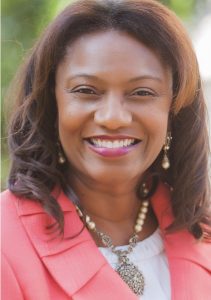 In California, shelter in place orders closed schools in March and, more recently, for the rest of the school year. Across the country, hundreds of thousands of students are at home with parents who are trying to juggle remote work responsibilities with childcare, instructional delivery, and a myriad of other stressors related to growing cabin fever. Online learning is touted as THE remedy, while solutions to the challenge of serving students with disabilities appear distant if not improbable. We are at an unprecedented moment in our nation’s history – one that is shining the light on the value and significance of teachers.
In California, shelter in place orders closed schools in March and, more recently, for the rest of the school year. Across the country, hundreds of thousands of students are at home with parents who are trying to juggle remote work responsibilities with childcare, instructional delivery, and a myriad of other stressors related to growing cabin fever. Online learning is touted as THE remedy, while solutions to the challenge of serving students with disabilities appear distant if not improbable. We are at an unprecedented moment in our nation’s history – one that is shining the light on the value and significance of teachers.
America’s commitment to educational equity and access is being put to the test, and teachers and other school personnel are rallying to respond. In Texas, carpools of teachers are canvassing neighborhoods to greet their students, albeit through windows to maintain appropriate social distance. Teachers are facilitating “hangouts” via ZOOM web conferencing, so that students can see and interact with their classmates, reinforcing their sense of connection. In Georgia, volunteer school “lunch ladies” prepare meals for elementary students who qualify for free and reduced priced meals – providing nourishment even though schools are closed. The line of cars to receive the meals extends the length of the block, and the approach to the distribution site is signaled by a sign that reads, “Don’t roll down your windows. Open your trunk” thereby ensuring the safety of all concerned. In Alabama, schoolwork backpacks are being built and sent home to students who don’t have access to computer technology, nor the internet. One charter school in Florida, in fact, sent students home with Chromebooks and internet hotspots in order to stay connected. Educators are compassionately attending to the human side of education first, then creatively strategizing about how to deliver instruction to EVERY child in this time of uncertainty.
Every child deserves a compassionate and competent teacher, and every teacher deserves a preparation program that attends not only to subject matter knowledge and nuanced strategies of instruction but also to the heart-work of the profession. Now is the time to usher in a new normal for preparation programs, one that is explicit about the significance of family and community engagement and the need to consider context when identifying “high leverage” content.
With 51 percent of America’s schoolchildren being children of color and only 20 percent of America’s teachers representing these same racial and ethnic groups, teacher diversity is also increasingly critical. Children need to see themselves among these important role models. Diverse educators use their insider knowledge of communities to create meaningful and effective learning experiences in which every child feels seen and heard and able to excel as a valuable and capable citizen of the world.
Now more than ever, it is imperative that EVERY teacher gain an appreciation of the pivotal role that culture and identity play in moving student achievement outcomes forward. For those who are not in education, it is equally imperative to reflect on and elevate the prestige of the teaching profession. With examples all over our country, this is a teachable moment that ought to be embraced by us all.
Dr. Cassandra Herring is president and CEO of the Branch Alliance for Educator Diversity (BranchED). BranchED is a national nonprofit organization aimed at maximizing programming and driving innovation in preparing highly effective diverse educators for all learners. Dr. Herring’s passion about equity-driven education reform fuels her work. To date, BranchED’s network spans some 132 universities located in 36 states, Puerto Rico, and the Virgin Islands. The network prepares some 26,000 teacher candidates per year.
